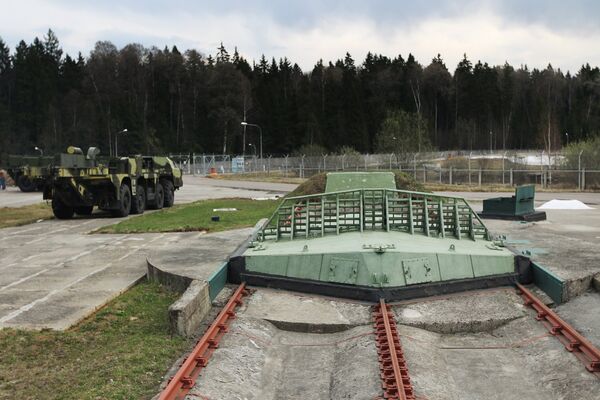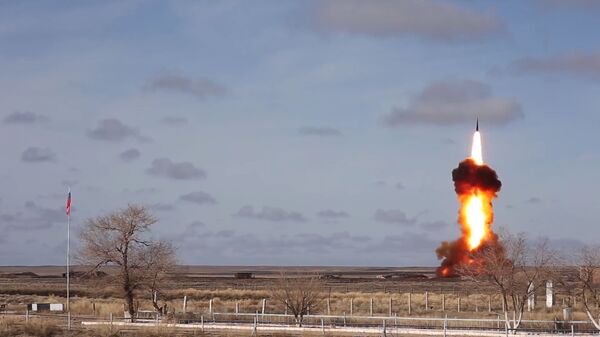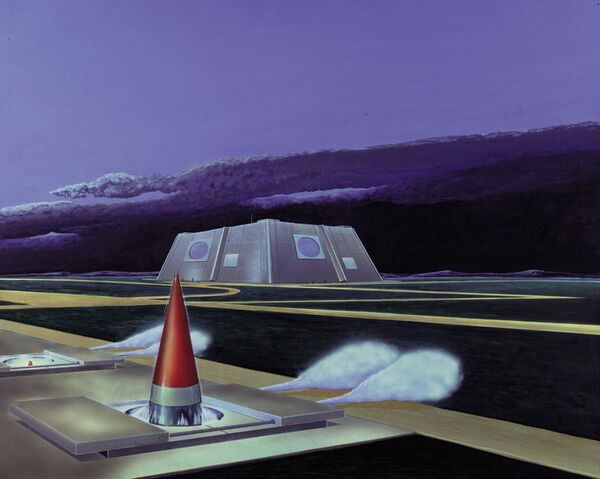The development of the A-235 Nudol missile defence system goes back to the late 1970s, when the highly secretive Vympel NPO design bureau was tasked with the creation of a missile defence system to succeed the A-135 Amur. The development of the A-135 began in 1971, and was successfully deployed in 1995.
Moscow’s work to create a missile defence system for the capital was allowed under the terms of the Antiballistic Missile Treaty, a 1972 agreement between the Soviet Union and the United States which placed limitations on the number of anti-ballistic complexes each country could produce to two, armed with up to 100 anti-ballistic missiles apiece.

Work on the A-235 was frozen in the 1990s due to lack of funds and warming relations between Moscow and Washington, but restarted in 2011 by Almaz-Antey, nine years after the Bush administration unilaterally terminated the ABM Treaty.
In the years since, the A-235, codenamed the ‘Nudol’ (presumably after the Nudol River in Russia’s Moscow region), has become one of the most closely-guarded secrets of the Russian defence industry.
Key facts about the system:
- The A-235’s interceptor missiles will make use of the Don-2N radar– the same large, pillbox-shaped missile defence and early warning system radar network outside Moscow that provides guidance for the A-135, although upgrades are expected to be made to accommodate the new missiles.
- In addition to ballistic missiles, the A-235 is expected to be able to take on and defeat maneuverable manned and unmanned spacecraft in near space.
- The system will consist of several types of solid-fueled rockets, with a range of up to 1,500 km, and the ability to accelerate to speeds of up to Mach 10. Unlike its predecessor, the A-235 is expected to use kinetic force (i.e. smashing into its targets at high speed), not nuclear or high-explosive fragmentation, to accomplish its mission.
- Another important feature of the A-235 is mobility – with the interceptor warheads expected to be deployable aboard road-mobile transport vehicles.
- Testing of the Nudol is thought to have started in either 2014 or 2015 at the Plesetsk Cosmodrome in northwest Russia, with about ten tests believed to have been completed since then. The latest test reportedly took place as recently as last week, when US Space Command reported on a Russian test of a direct-ascent anti-satellite (DA-ASAT) missile. The launch reportedly took place from Plesetsk on April 15, and Popular Mechanics speculates the missile used may have been the A-235. The Russian military has yet to provide any information regarding the suspected test.
At the Sary-Shagan test site (Republic of Kazakhstan), the air and missile defence forces of the Aerospace Forces successfully conducted a new test launch of a modernized missile of the Russian ABM system. #MoD #Aerospace_Forces #Missile_Defence #Kazakhstan #SaryShagan pic.twitter.com/mFle4QLyc4
— Минобороны России (@mod_russia) June 4, 2019
Amur No Slouch Either
Although the A-235 is expected to be a significant improvement over the A-135 Amur, the current system is no slouch when it comes to protecting the skies around Moscow. The A-135 features a fully automated target detection and tracking system, including the ability to distinguish between real and potential dummy warheads. The system has received multiple upgrades, taking particular advantage of the miniaturization of components made possible in the 2000s.
Commenting on the Nudol’s expected capabilities, Viktor Murakhovsky, editor in chief of Arsenal of the Fatherland, a Russian military magazine, speculated that functionally, the A-235 will essentially be a deeply modernized version of the A-135, with the system’s primary mission remaining the same: the defence of Moscow and the central Russian industrial region from ICBM attack.

As for the Nudol’s expected anti-satellite capabilities, the observer noted this would be a very welcome feature, “because the US’s intention to deploy new weapons systems in space is very worrying. The Nudol effectively counters such threats.”
Plans to make the A-235 mobile are also important, according to Murakhovsky, given the Pentagon’s ‘Prompt Global Strike’ initiative – the concept of a massed precision-guided conventional airstrike meant to decapitate an opponent’s ability to retaliate to an attack without resorting to the use of nuclear weapons.





